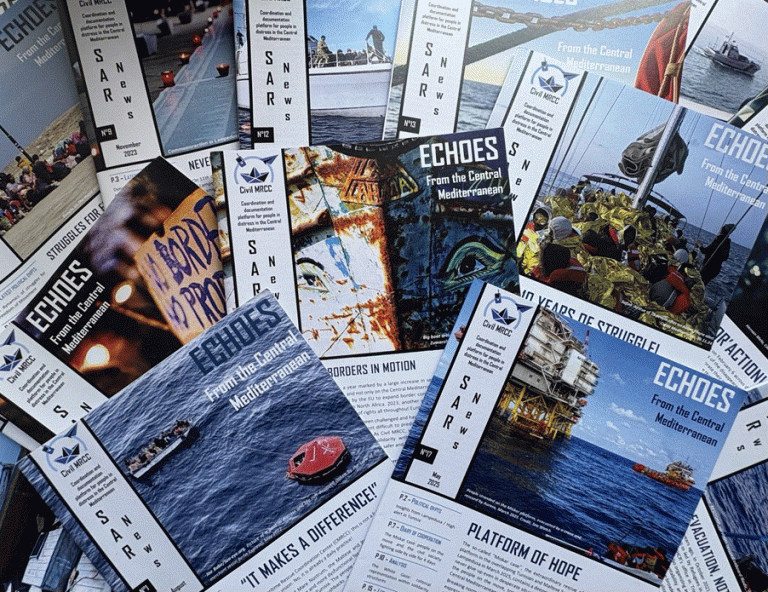A new Report by Border Forensics
In May 2015, with the support of the European Union, its agencies and its member states, the Nigerien government adopted Law 2015-36, relating to illicit migrant trafficking to protect migrants from “unscrupulous smugglers.” Services for migrants such as transport and accommodation, once openly accepted by the Nigerien authorities and vital for the local economy as well as trans-Saharan mobility, were thus criminalised and subjected to severe penalties, including prison sentences.
These repressive measures and the strengthening of the border devices resulting from them have however neither deterred migrants from transiting via Niger’s routes nor protected them from “unscrupulous smugglers” as suggested by the “mission accomplished” narrative broadcast by the Nigerien authorities, their international partners and the media.
On the contrary, according to numerous academic, journalistic, or human rights defence reports, the criminalization of services for migrants and the related control practices have created the need for an underground transport economy, thus exacerbating the dangers migrants face today. To escape controls, carriers take routes through more remote and isolated areas, creating even more dangerous and often fatal situations for migrants when a vehicle breaks down, gets stuck in sand or is abandoned by carriers for fear of being arrested.
Since the adoption of this law, many actors such as Alarm Phone Sahara (APS) have worked tirelessly to shed light on the ensuing humanitarian disaster for migrants. However, despite these efforts, the actual number of deaths in the Nigerien desert remains unknown. According to the Missing Migrant Project, at least 1092 migrants have died since 2014 trying to cross the Nigerien Sahara. Nevertheless, these figures only represent the tip of the iceberg.
The severe penalties provided for by Law 2015-36 have forced trans-Saharan flows towards very remote areas where incidents can easily go unnoticed, thus making the process of collecting reliable data on the number of deaths even more difficult. In response to this humanitarian crisis resulting from Law 2015-36 and the absence of reliable empirical data, Border Forensics has developed innovative geospatial analysis and remote sensing methodologies. The aim of these new methodologies is to provide empirical documentation on the deadly effects of border control practices in Niger.
These methodologies have been deployed at three key sites located along the Dirkou-Sabha axis: the city of Séguédine, the Madama military fort and the Toummo border post at the border between Niger and Libya. Border Forensics’ analyses have focused on water losses and the detection of migrants by defence and security forces. To do this, two geographical models previously applied to the forensic analysis of the militarization of the Sonora desert in the border areas between the United States and Mexico have been used.
The first model, the viewshed analysis, uses an algorithm to determine the visibility of various tracks from the main road. Higher values mean greater visibility and, therefore, an increased risk of detection from the main road. The second model incorporates a cost-distance analysis, an algorithm that calculates the lowest cumulative cost to cross a given landscape. Using climatic and terrain data, this model can estimate the minimum amount of water a person in distress would need to reach the main route to get help. This model draws on those used in search and rescue operations in the Sonora desert but has been adapted to account for the effort associated with navigating dunes compared to harder surfaces such as bare rock.

Although security dynamics and military activities impacting migration vary from one site to another, the application of these analysis models to the three sites studied reveals clear patterns for each of them. Remote sensing analyses show a significant increase in military and security activities following the adoption and implementation of Law 2015-36.
The report highlights that in the context of increased criminalization of migration (and its assistance) resulting from this law, the presence of checkpoints, police stations, customs and identified military fortifications are all factors that encourage carriers and their passengers to divert their paths. Fearing being arrested when passing through these border and security infrastructures, they take more remote and less visible tracks. Because of the remoteness of these tracks from the main road, carriers and their passengers are at greater risk in case of vehicle breakdown or passenger abandonment, with a high risk of dehydration.
The Border Forensics analysis has explicitly quantified and made visible the risk of dehydration that comes with these new routes. The study involved a comprehensive investigation of the visibility of these new paths and the accompanying dehydration risks, thereby highlighting the inherent dangers.
There is a significant correlation between the increased border controls at the three studied sites and the subsequent decrease in route visibility, according to Border Forensics. These intensified checks have compelled carriers and their passengers to resort to less visible paths which veer significantly off main routes or areas where one might find assistance.
This shift has made reaching the main route in case of emergencies increasingly challenging, thereby escalating the chances of cognitive impairment, dehydration and heat stroke among migrants. This trend mirrors the one observed at the Mexico-US border, where bolstered border checks have led to heightened risks associated with crossing the Sonora Desert. Such increased scrutiny drives migrants into more remote areas, far from main routes, exacerbating the physiological risks they face.
In parallel with the Sonora Desert, in Northern Niger these risks have dramatically heightened the dangers facing migrants. The analysis conducted by Border Forensics has revealed a clear pattern of border control intensification and alterations in migrant paths that lead deeper into the desert. Survival rates plummet in these areas in the face of recurring incidents such as vehicle malfunctions, abandonments and water shortages.
A more in-depth analysis was undertaken to examine the correlation between the heightened risk of dehydration and dangers for migrants using these alternative paths and the results of the field of vision analysis. The intention was to compare the least-cost path analysis results with the field of vision at each site to understand the causal relationship. The findings showed a significant correlation between the field of vision and sweat loss: the less detectable the route, the higher the risk of death for the people who use it.
Following the adoption of law 2015-36, a noticeable shift in paths towards less visible locations and an increase in sweat loss are evident. Any effort, even minimal, to evade detection, drastically escalates water loss. This trend underscores the clear correlation between the degree of invisibility and the danger level of post-2015 routes. Difficulties in reaching the main route and finding assistance have increased, leading to a higher likelihood of cognitive impairment, dehydration and heat stroke among migrants. Even a slight deviation from the main route significantly elevates the risks of dehydration and death.
Mission Accomplished? The Deadly Effects Of Border Control In Niger
Article published in Echoes#6



